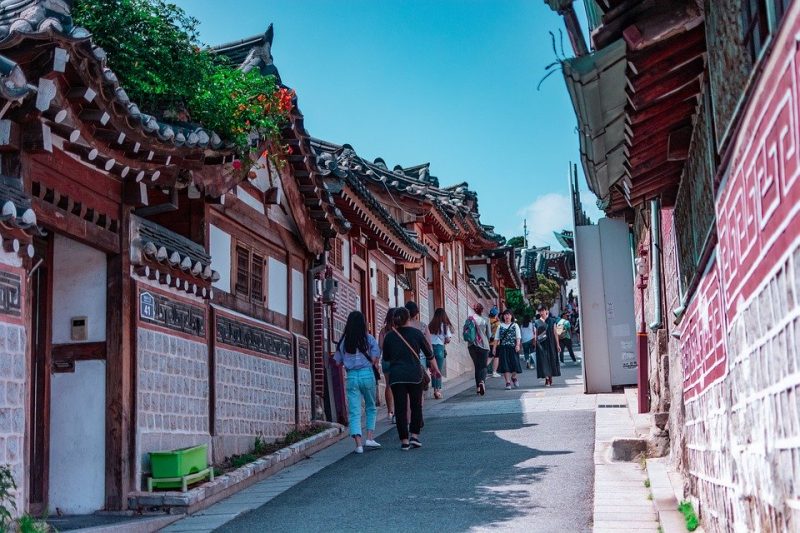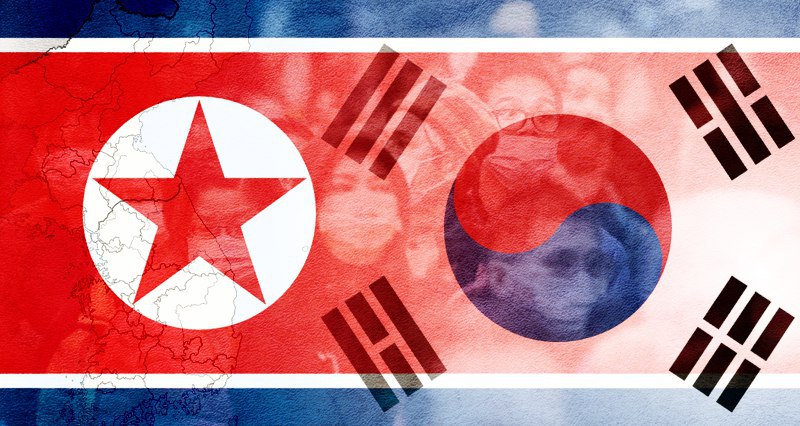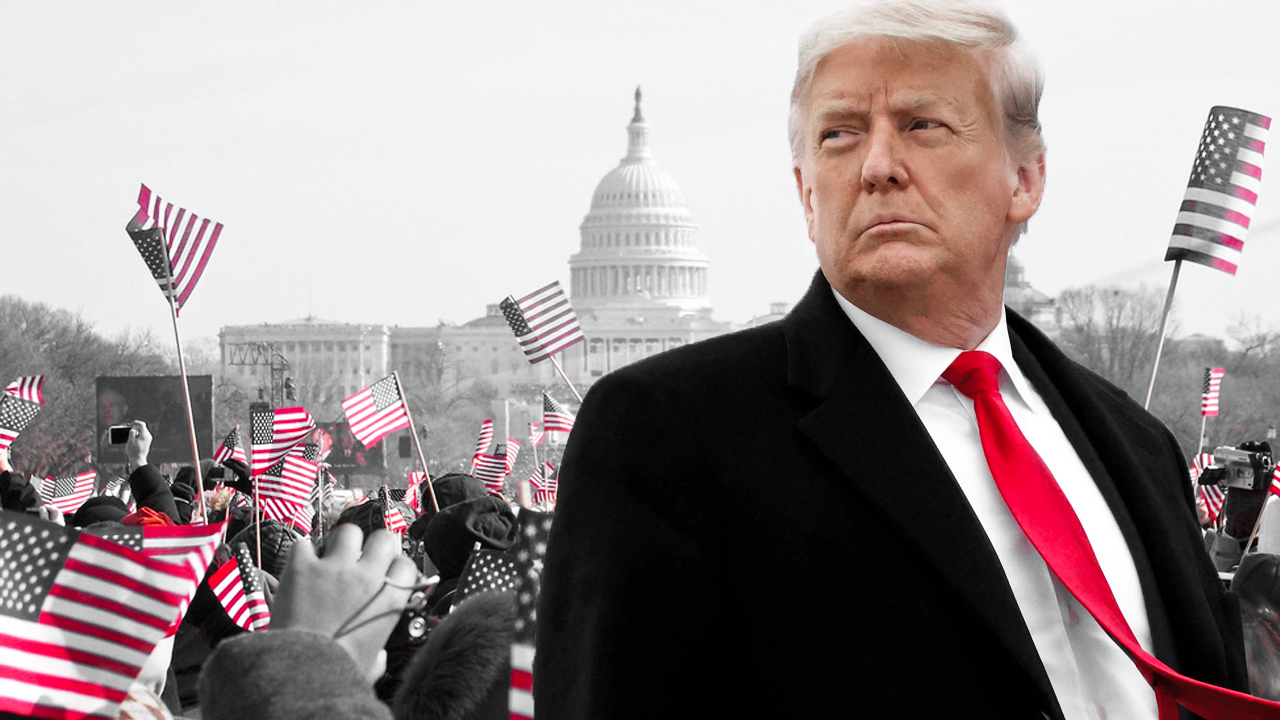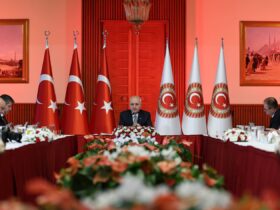Following the outbreak of the novel coronavirus in Wuhan in December 2019 and the spread of the disease, it seemed that the disease was primarily threatening neighboring countries in East Asia.
Since then, Europe and the US have become the main centers of the pandemic on a global scale, as China and its neighbors were able to significantly decrease, if not completely stop, the spread of the virus.
At first glance, they have undertaken absolutely different strategies, and among them there are both rich capitalist countries such as Japan or South Korea, and socialist North Korea, which is under international sanctions. What is the secret of these countries’ success?
North Korea: Socialism cures
Pak Myong Su, a director of the North’s central emergency anti-epidemic headquarters told AFP that “not one single person has been infected with the new coronavirus in our country so far”.
https://twitter.com/coldnoodlefan/status/1245735072746991626?s=20
Although Western countries have questioned this information, the mass mortality if it really had occurred could hardly have been able to be concealed. Thus, in the 1990s the DPRK was unable to hide information about hunger caused by Western sanctions. So at the very least we can say that the effect of the new coronavirus is likely minimal in North Korea.
North Korea was saved in large part by the Soviet healthcare system. North Korea’s healthcare system is effective precisely because it inherited the traditions of Soviet socialist medicine.
Thus, the average life expectancy in North Korea is 71.7 years. In comparable GDP countries – Myanmar, Tanzania and Nepal – 65-67 years. The infant mortality rate in DPRK is much lower than in India, which is richer by GDP per capita.
One of the features of such a system which is fundamentally different from those in capitalist countries is its totally different attitude towards doctors and reliance on numerous medical personnel. In the capitalist West, as a rule, a doctor is an expensive specialist, there are a limited number of them, and medicine is more focused on the treatment of complex diseases as their treatment is expensive and brings more money for medical institutions. This is also beneficial for pharmaceutical companies, as it allows them to attract more resources for innovation and to load enterprises with the production of expensive drugs.
Socialist medicine, on the other hand, was aimed at ensuring the health of as many people as possible at the expense of the state.
As a result, North Korea surpasses even France and the United States in the number of doctors for every 10 thousand people: according to WHO, in 2016 North Korea had 37 doctors per 10 thousand people. In the USA, this figure was 26 doctors, while in France it was 32.
This makes it possible to effectively combat the epidemic at the initial stage, to stop its spread. As a result, only a few patients reach the stage when artificial lung ventilation devices are needed. These machines are already the Achilles’ heel of North Korean medicine because of the country’s poverty and sanctions.
DPRK also imposed curfew very early. Already on January 24, quarantine was introduced in the country, almost all air and railway communication with other countries stopped and tourists were banned from entering the country. Foreigners in Pyongyang were prohibited from leaving the territory where they lived. In addition, DPRK has introduced a ban on various facilities and public transportation.
The press in the DPRK has been actively informing people about the fight against the coronavirus. The border with China was quickly closed. Even smuggling operations, which previously allowed the country to survive under sanctions, were suspended.
South Korea: quarantine and sects
In March, South Korea was able to reduce the rate of infection from about 1,000 per day to about a hundred per day. According to the World Health Organization, on April 2, South Korea registered 89 new cases of infection with coronavirus COVID-19 per day and 159 recovered, the total number of infected rose to 9,976, with only 169 people having died. However, the virus has been spreading in South Korea since January.

Pixabay
More than 5,000 people (52.7%) among all those infected are associated with the Shincheonji sect. A total of 83.8% of cases are connected with collective infections in the country. 518 cases (5.3 per cent) were imported from abroad. “Shincheonji is a neo-protestant sect that has had underground branches in a number of Chinese cities, including about 200 active followers in Wuhan.”
South Korea has raised the epidemiological threat to the highest level. Daegu City and three cities in Gyeongsang-Pukto Province were named special disaster zones. Until April 5, residents were asked not to leave their homes and close sports, entertainment and religious facilities. The school year will begin on April 9 online.
The impressively low number of deaths and the rapid stop of the virus’s spread are due to the fact that South Korean authorities have created a large-scale and organized testing programme.
Thanks to this it was possible to take tests of more than 270,000 people. This is more than 5,200 tests per million inhabitants – the second highest result in the world after Bahrain. In comparison, the US has 74 tests per million inhabitants.
In South Korea, the algorithm is as follows: patients who have chronic diseases are hospitalized first of all. Patients with moderate symptoms are sent to refurbished educational institutions and state-provided buildings where they receive basic medical care. People who take a negative coronavirus test twice are discharged. Those who have had contact with infected people or have mild symptoms are left in the home quarantine for two weeks – twice a day they are checked by doctors.
South Korean doctors actively use the experience of the fight against MERS in 2015, an epidemic also caused by coronavirus.
Japan: alone instead of quarantined
Japan, on the other hand, did not introduce quarantine to fight the coronavirus. To prevent a sharp increase in the number of infected, public events were canceled, amusement parks closed and concerts postponed. The authorities also allocated two reusable masks per family. This measure has already sparked a wave of criticism from the Japanese.
According to the World Health Organization, on April 2, Japan confirmed 2,384 cases of COVID-19.
This data does not include the 712 former passengers and crew members of the Diamond Princess cruise liner. The isolation of those infected on the liner has become one of the main reasons for criticism of Japan in the world media and social networks.
From April 3, a ban on visits to Japan from 73 countries will come into effect. All those who enter the country will have to pass a 14-day voluntary quarantine. The Japanese authorities postponed the Olympic Games in Tokyo from July to August 2021.
However, if we compare Japan not only with China or South Korea, but also with European countries, the main difference is the relative softness of measures. There is no total quarantine, nor is there isolation at the city level.
According to experts, relatively low rates of illness may be related to problems with the statistics of pneumonia-related deaths in general, as well as to specific Japanese social practices.
One of them is a common habit of wearing medical masks and mysophobia(fear of infection). In Japanese companies, it is not customary to get sick and receive leave, so people are afraid to get infected. The second reason is the practice of social distancing: “hikikomori”, the relatively young population of megacities, the fact that most elderly people live in the provinces, bowing instead of physical contact and that fact that Japan has one of the lowest percentages of sexually active people in the world (even in marriage).
Taiwan: spot quarantine
Taiwan’s response also turned out to be rather specific. There were fears that Taiwan, because of its location near mainland China, would soon become a high-risk area due to the coronavirus epidemic: but that did not happen. Despite the geographical proximity to the epicenter of the pandemic in Taiwan, there were only 252 cases and two fatalities.
Taiwan’s authorities realized the potential scope of the crisis in advance. Following the SARS epidemic that raged in 2002 and 2003, Taiwan established the National Health Command Center (NHCC), and were thus prepared for the next possible crisis.
The NHCC provides the necessary data and also makes it possible for experts to work together. In addition, Taiwanese authorities have restricted the entry of people from mainland China, Hong Kong and Macau. At the same time, the Taiwanese government has banned the export of protective masks to ensure sufficient supplies of these protective equipment on the island.
Taiwan has integrated national health insurance data into its migration and customs database. This allowed medical professionals to identify potential patients almost immediately based on their tourism activity.
The policy of prevention has continued in other areas of life. A single public information center was established, a map of sources of infection was created and an education program for the public on the threats of infection to health and means of preventing it was launched.
Taiwan has isolated each potentially dangerous case at home and imposed a fine of more than $3,000 on those who violate quarantine regulations. The most important thing, however, is to identify those infected and track down potential infectious cases.
In Taiwan, authorities have resorted to a variety of methods to track who has had contact with an infected person, from a simple interview with the person to checking internal security cameras or paying for transportation.
Thus, Taiwan has one of the lowest COVID-19 cases in the world due to early response and control of a potential threat.
Taiwan’s authorities announced on April 1 that they have decided to help the countries most affected by Coronavirus by donating 10 million protective masks.
Traditionally, Taiwan’s supposedly “open” approach to the fight against coronavirus is contrasted with the approach of mainland Chinese authorities. However, as we see, isolation measures have also played a significant role in Taiwan and different tools of cyber control on population were used. The key to containing the spread of COVID-19 was Taiwan’s rapid response to the new coronavirus – checking all passengers arriving from Wuhan in early January, even before receiving confirmed information about the possibility of human infection.
The government closed the entry of foreign tourists from countries affected by the epidemic due to the doubling of the number of imported COVID-19 infections in mid-March and introduced a 14-day quarantine for certain categories (citizens with residence permits, diplomats, specially approved business guests and Taiwanese citizens).
Singapore: localizing the sick and punishing quarantine violators
Singapore was the third country after China to record COVID-19 infections, and by mid-February it had already detected 80 positive cases. Although formally it is not an East Asian country but rather a Southeast Asian country, it is largely linked to Chinese cultural space, which in many ways seems to have predetermined an effective solution to the coronavirus problem.
Thanks to large-scale testing of the population at the initial stage (the authorities decided to check all cases of pneumonia and flu without exception), as well as testing of every possible contact of an infected person with the involvement of police and special tracking teams (they also tightly control people under quarantine) and the use of modern technological capabilities, the situation was kept under control.
The government has actively encouraged people to go to hospitals in advance by paying for testing and hospital bills, with patients even with mild symptoms being sent to hospitals rather than to home quarantine. This allowed patients to be isolated without stopping the daily activities of healthy people and businesses. The telecommuting was one of the measures to prevent the new coronavirus.
At the same time, the Singaporean authorities imposed high fines for violating COVID-19 regulations. For example, for violation of the rules of self-isolation, a resident will have to pay $10,000 or serve a prison sentence of up to six months. It is also possible to have your citizenship revoked for quarantine violations.
According to the World Health Organization, only 1000 cases of coronavirus have been registered in Singapore, with only 3 deaths. The number of new cases per day was 74. With a population of 5 million, Singapore has the world’s second highest population density of 7,982,753 people/km².
All the countries described above were quite successfully coping with the coronavirus epidemic, which cannot be said about the countries of Europe and the US. To them we can of course add China, which managed to cope with the epidemic despite being ground zero. What are the reasons for the success of all these countries, economic and political systems, which are quite different? What do North Korea, Singapore and others have in common?
1.The development of mass healthcare, not only in DPRK, but also in Japan and Taiwan over the last 30 years. In the same period, the elites in the West have been winding down medicine for the masses and closing epidemiological clinics, as well as not renewing retiring medical equipment. The countries in the region have experience in fighting previous epidemics – SARS and MERS.
2.Rigid restrictive measures plus practices of social distancing rooted in East Asian cultures.
3. Heavy punishment and discipline of the population, which largely followed the instructions of the authorities.
Most of these countries – with the exception of Japan – are or have been authoritarian states. In Japan and South Korea, authoritarian practices remain at the level of large corporations.
4. The Confucian culture of obedience affects the actions of the population. These populations are disciplined in carrying out the orders of the authorities and the authorities themselves, as well as the employees of the relevant services aimed at the most efficient options.

















Leave a Reply